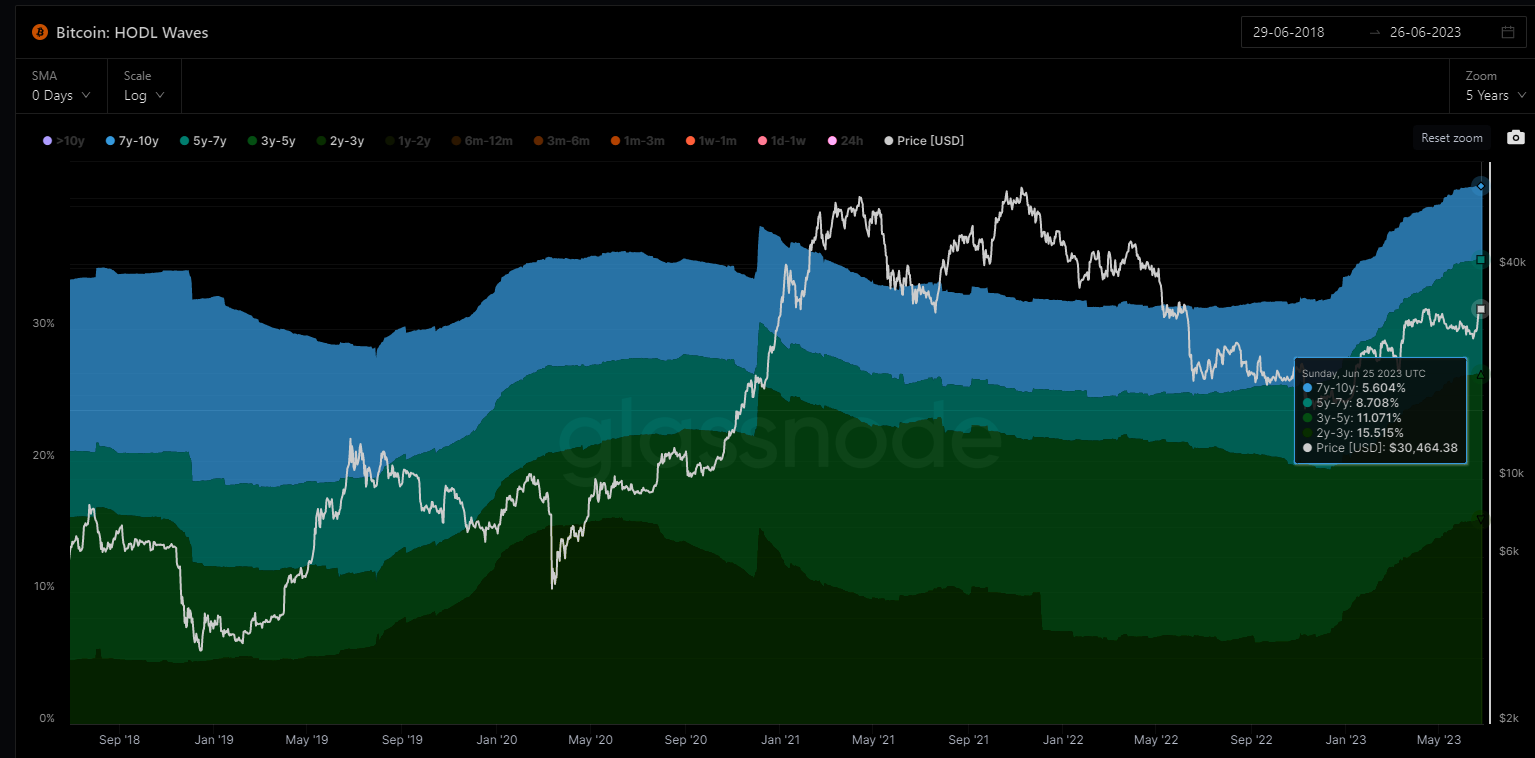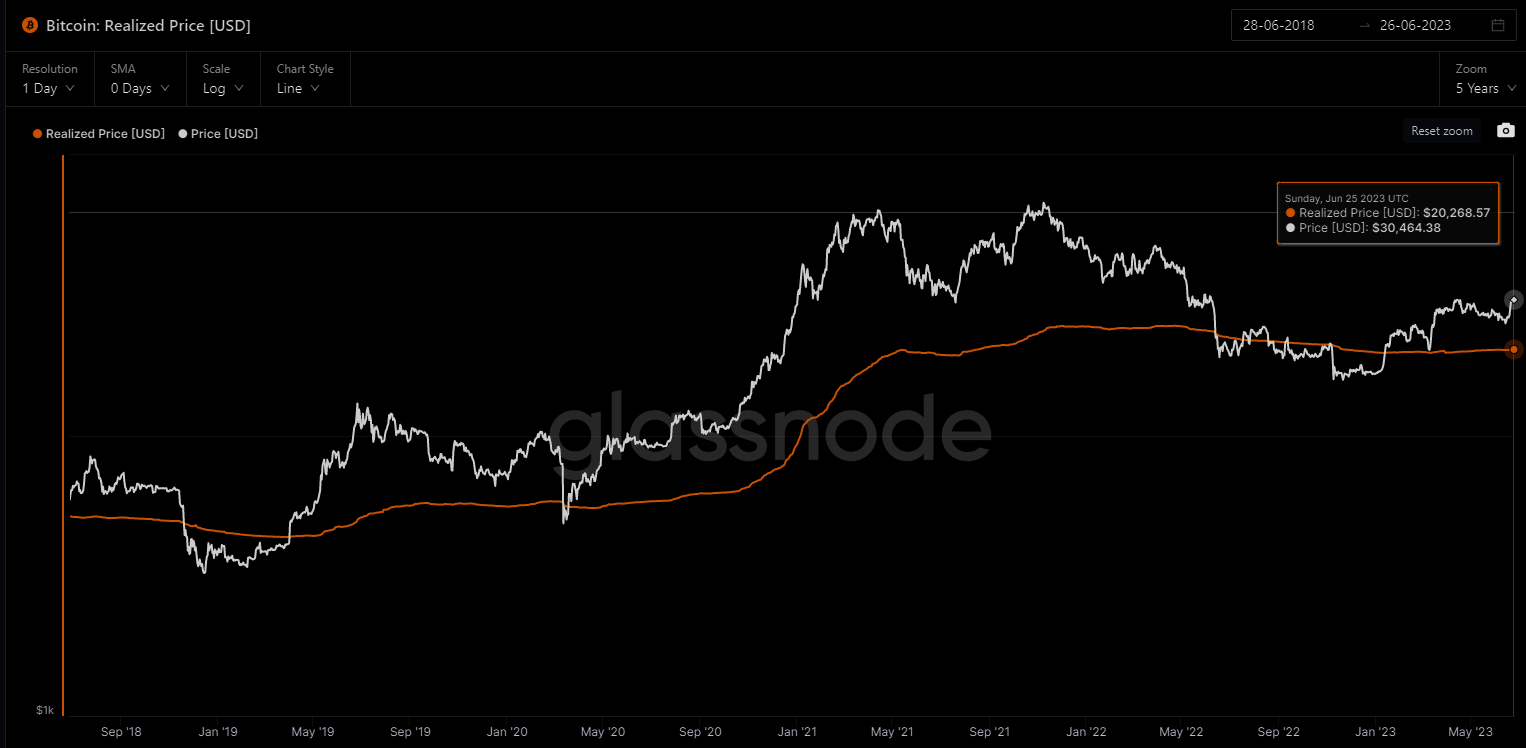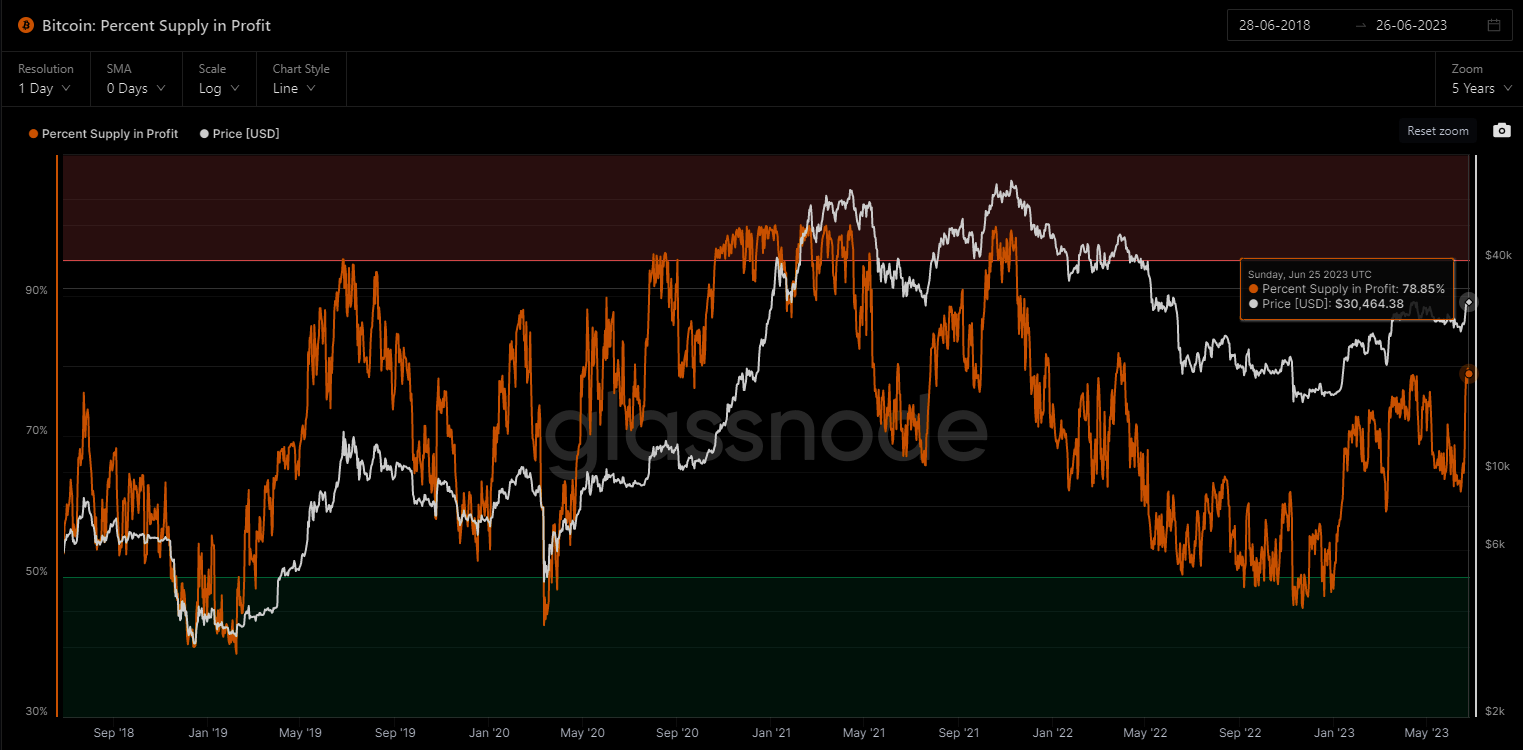Health of the bitcoin market – 3 charts that matter
The market price of bitcoin as at 25 June was US$30,464, around 55% off its November 2021 highs. However, it is up over 90% since the FTX collapse, which produced the November 2022 lows, and a whopping 83% return YTD.
As at the time of writing, it remains the best performing asset class (if you consider bitcoin as an asset class) for 2023 (remembering, of course, that past performance is not indicative of future performance). If you were one of the lucky ones to get in close to the recent lows back in November 2022, you’d be very happy with your returns. But how about those that have been holding bitcoin for years?
The following charts using on-chain metrics are good indicators of the current state of the bitcoin market.
The “HODL waves” chart below shows a bundle of all active supply age bands, aka HODL waves. Each coloured band shows the percentage of bitcoin in existence that was last moved within the time-period denoted in the legend.
Interestingly, more than 40 5% of bitcoin holders have been holding for over two years.
Arguably, these holders could be seen as ‘believers’ in bitcoin, seeking to invest for the longer term, as opposed to being ’traders’ looking for a short-term profit.

Source: Glassnode. As at 25 June 2023. Past performance is not indicative of future performance.
The market price of bitcoin is an indicator of sentiment in the short term, however, the market price alone does not tell the whole story. A better representation of the ‘health’ of the Bitcoin network and investors’ positions is a metric called ‘Realised Price’.
Realised Price is the average value of bitcoin supply calculated at the price at which coins were last moved on-chain.
The way to calculate Realised Price is by taking the Realised Cap divided by the current supply. Realised Cap values each coin based on the price when it last moved, as opposed to its current value.
Realised Price is helpful because, if the market price sits below the Realised Price, this metric can indicate that the bitcoin market is under a period of stress and investors, as a whole, may be ‘underwater’. The opposite can be said if the Realised Price is lower than market price.
As at 25 June, Realised Price sat at US$10,196 below the market price.
This metric seems to show encouraging signs regarding the ‘health’ of the overall Bitcoin network. And we can delve even deeper using on-chain metrics to see just how much of the network is currently in a profit position.

Source: Glassnode. As at 25 June 2023. Past performance is not indicative of future performance.
Based on the numbers above, 78.85% of investors are in a positive position. This can be seen in the Percent Supply in Profit chart below.

Source: Glassnode. As at 25 June 2023. Past performance is not indicative of future performance.
The bitcoin price is volatile and can move quickly. And it seems that in the short term, that’s all anyone talks about – especially when nearing all-time lows or highs. But it’s useful to take a step-back and look at what’s ‘under the hood’ to get a better sense of the health of the market and investors’ positions, so you don’t get caught-up in the everyday hype. These three on-chain metrics can be a good place to start.
Gain exposure to the leaders of the rapidly emerging crypto economy
CRYP aims to track the performance of an index (before fees and expenses) that provides exposure to global companies at the forefront of the dynamic crypto economy.

Investing in crypto-assets or companies servicing crypto-asset markets (including through CRYP) should be considered very high risk. CRYP provides focused exposure to companies involved in servicing crypto-asset markets or which have material investments in crypto-assets. Crypto-assets are highly speculative in nature and companies with significant exposure to crypto-asset markets can be expected to have a very high level of return volatility. Exposure to crypto-assets involves substantially higher risk when compared to traditional investments due to their speculative nature.
Investing in crypto-assets or crypto-focused companies is not suitable for all investors and should only be considered by investors who:
- fully understand their features and risks or after consulting a professional financial adviser, and
- who have a very high tolerance for risk and the capacity to absorb a rapid loss of some or all of their investment.
CRYP does not invest in crypto-assets directly, and does not track price movements of any crypto-assets. For more information on risks and other features of CRYP, please see the Target Market Determination and Product Disclosure Statement, available at www.betashares.com.au.
Any investment in crypto-assets or crypto-focused companies should only be considered as a very small component of an investor’s overall portfolio.
1 topic
1 stock mentioned
1 fund mentioned

